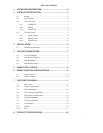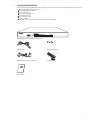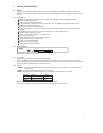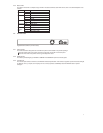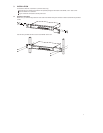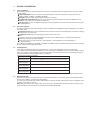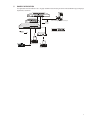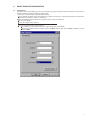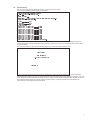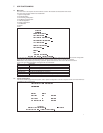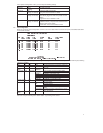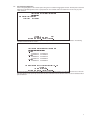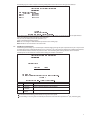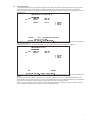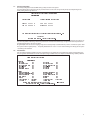
7
4 HELPFUL SUGGESTIONS
4.1 Prior to Installation
Before installing the Switch and connecting network devices, it is important to plan the network's layout. Things you should
consider include:
Dedicated Bandwidth: File servers and other high-traffic hardware improve their performance if they have their own
dedicated 10Mbps, 100Mbps, or 1000Mbps bandwidth.
Full-Duplex: Determine which devices support Full-Duplex connections.
Fast Ethernet & Gigabit Ethernet: Make sure rules for cable lengths and categories are followed. 100BASE-TX and
1000BASE-T have the same rules for cable and distance.
Auto-Negotiation: Devices with different speeds may be easily swapped when the other end of the cable is fixed to a port
with Auto-Negotiation.
4.2 Half- and Full-Duplex
The Switch supports both Half- and Full-Duplex modes for 10BASE-T and 100BASE-TX. But the 1000BASE-T only supports
Full-Duplex mode.
In Half-Duplex mode: Data cannot be transmitted and received at the same time. Attached devices must finish transmitting
data before they can receive data.
In Full-Duplex mode: Data can be transmitted and received at the same time.
However:
Full-Duplex transmission is only possible between two devices with a dedicated link (e.g., Switch-Switch, Switch-PC)
Both devices must have Full-Duplex capability
Both devices must be set to Full-Duplex (e.g. Auto-Negotiation – Auto-Negotiation, Non-Auto-Negotiation to
Non-Auto-Negotiation)
The 100BASE-TX/10BASE-T or 1000BASE-T/100BASE-TX/10BASE-T ports on the Switch detect and set the line's operating
mode by using their Auto-Negotiation function.
4.3 Auto-Negotiation
Every 1000/100/10Mbps speed port on these Switches has a built-in "Auto-Negotiation" function. This technology
automatically sets the best possible bandwidth as soon as a connection is established with another network device (usually at
Power “On” or Reset). This is capability is achieved via the Switch’s Auto-Negotiation function that automatically detects the
modes and speeds the second (attached) device is capable of.
Evaluating Auto-Negotiation Capability:
if attached device is: the Switch will automatically set its TP ports to operate at:
1000Mbps
with Auto-Negotiation
2000Mbps (1000BASE-T, Full-Duplex)
Note: Almost all 1000Mbps devices only operate in Full-Duplex mode.
100Mbps
no Auto-Negotiation
100Mbps (100BASE-TX, Half-Duplex)
100Mbps
with Auto-Negotiation
200Mbps (100BASE-TX, Full-Duplex)
10Mbps
no Auto-Negotiation
10Mbps (10BASE-T, Half-Duplex)
10Mbps
with Auto-Negotiation
20Mbps (10BASE-T, Full-Duplex)
Note: If the attached device is set to a fixed mode (ex: Forced Full-Duplex) it will not operate as an Auto-Negotiation device.
4.4 MAC Address Table
Every Ethernet data packet includes both source and destination addresses. This Six (6) bytes ID is called the MAC (Media
Access Control) Address. It supports 16 K MAC address.
The model can automatically learn and store MAC addresses. However, the MAC address table is volatile: it disappears when
the Switch is powered “Off” or reset.
Note: When the network needs reconfiguration, we recommend to restart the Switch first. After all nodes have been moved,
Remove the power cord and re-attach it to rebuild the internal MAC address table.




